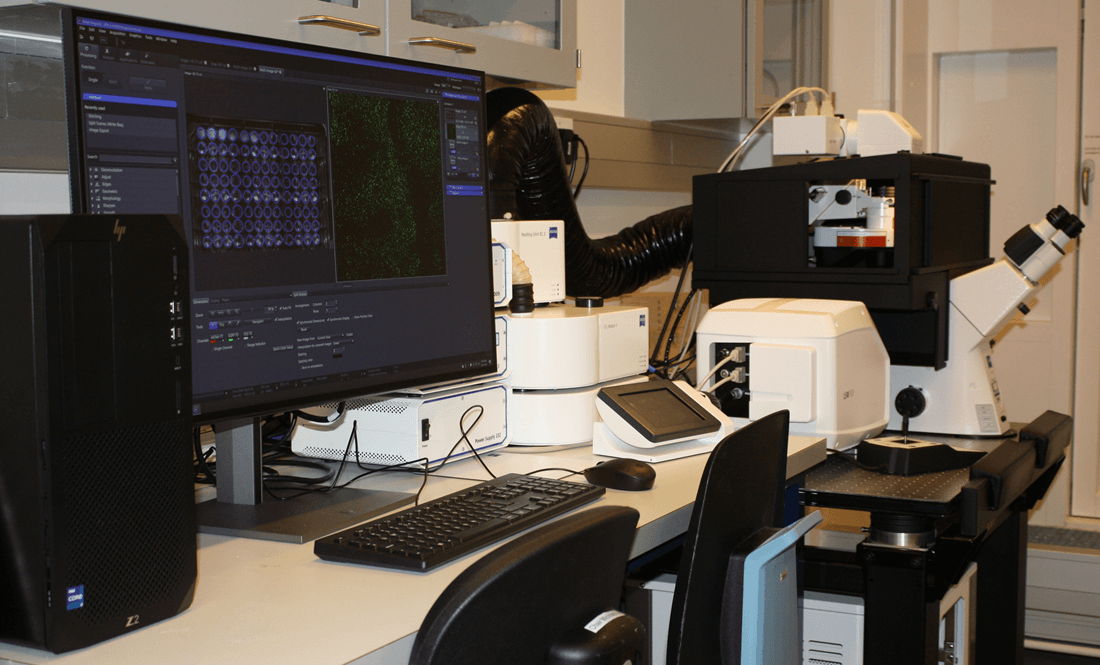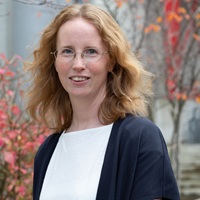Microbial Imaging and Interaction Platform

Description
The Section for Food Microbiology, Gut Health, and Fermentation is equipped with a confocal ZEISS LSM 900 microscope for advanced visualization of microbial interactions. This system is used to investigate microbe-microbe and microbe-host interactions at the microscale. The behavior of microorganisms is closely tied to their immediate environment, and understanding how they interact with their physical surroundings and neighboring entities is essential for assessing their overall impact on ecosystems. This includes studying processes like the expression of virulence genes, enzyme secretion, and the excretion of secondary metabolites. Understanding spatial microbiological organization is crucial for interpreting dynamic changes within complex microbial communities and their interactions with surrounding matrices.
The confocal laser scanning microscope is housed in a classified laboratory (GMO Class 2), which allows work with genetically modified Class 2 pathogens (e.g., tagged with reporter genes) and most Class 3 pathogens. The LSM 900 is inverted to ensure compatibility with cell and bacterial biofilm assays in well plates. The system is equipped with an incubator and CO₂ environmental chamber, allowing for both short- and long-term imaging of living cell lines.
Options and requirements for use
- Optical z-sectioning of fixed samples for detailed imaging at various depths
- 3D super-resolution imaging for high-resolution visualization of structures
- Rapid confocal scanning of fixed samples for efficient data acquisition
- Live cell imaging with environmental control (temperature, made ready for CO₂)
- Overlaying multiple fluorescence images with transmitted light images for enhanced contrast
- Widefield imaging of fixed samples for comprehensive visualization
- Automatic sample finder, enabling a clear understanding of optimal sampling methods
- Located in a GMO Class 2 facility, allowing work with genetically modified Class 2 pathogens and most Class 3 pathogens
LSM900 confocal microscope
4 laser lines (Laser module LM URGB)
2x GaAsP PMT detection modules + T-PMT
Automatic AI Sample Finder-x,y scanning stage
Definite Focus 3
Temperature control and CO2
Objectives: PN10x/0,25 APO20x/0,8 APO63x/1.4
Objective: C-ApoPlan 40x/1,20 W-incl. Autoimmersion for 40x objective
Colibri 7 incl. 5 LEDs for excitation
Single Band filter set for: DAPI, GFP, Cy3, Cy5
Axiocam 305mono camera
ZEN System software incl: Unmixing, Software autofocus
At the start of a collaboration on research with the University of Copenhagen, a cooperation agreement must be drawn up. There are different types of agreements depending on the nature of the cooperation. See more here: collaboration.ku.dk/cooperation-agreements/
Henrik Siegumfeldt, siegum@food.ku.dk
Dennis Sandris Nielsen, dsn@food.ku.dk
Contact
 Henriette Lyng Røder,
Henriette Lyng Røder,
Associate Professor,
h.lyng.roeder@food.ku.dk
